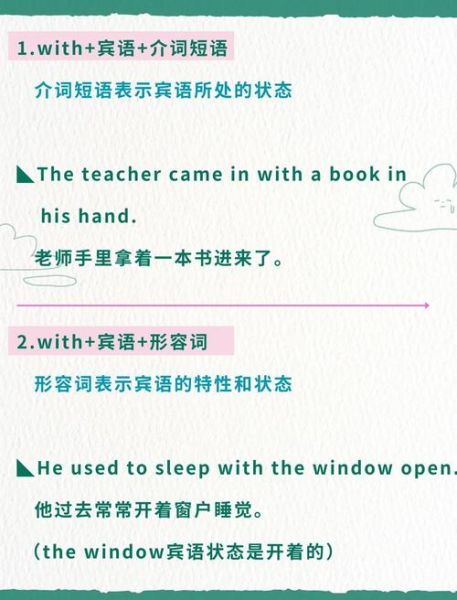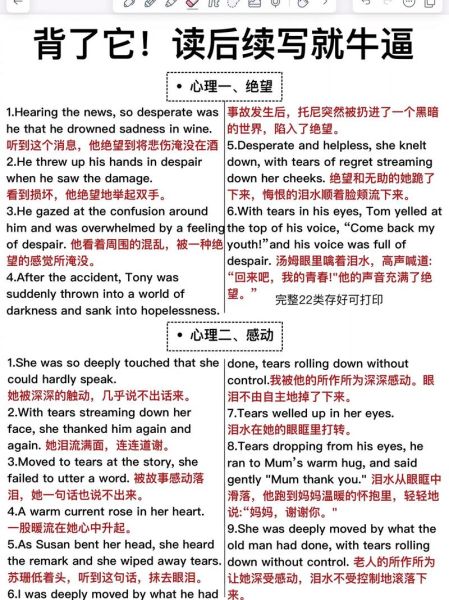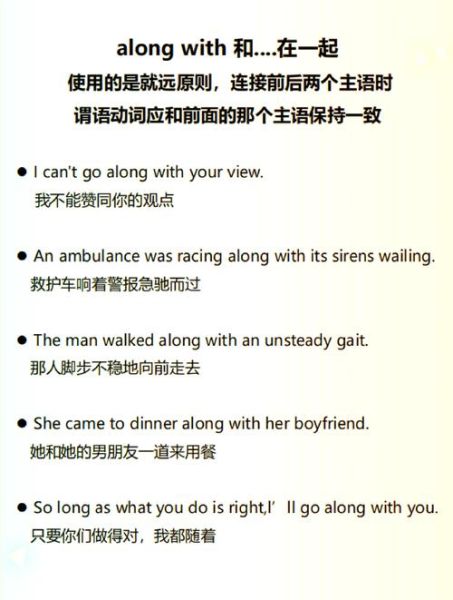很多学习者把with当成“和、带有”的介词,却忽视了它天然携带情绪色彩的特质。 自问:为什么“with tears in her eyes”比“she cried”更动人? 自答:因为with把情感与场景绑定,读者瞬间看见画面,而非只听见动作。

比起直接说“he was angry”,写:
with clenched fists,读者自动脑补青筋暴起的画面。
常见组合:
- with trembling lips(紧张)
- with raised eyebrows(惊讶)
- with a stiff neck(抗拒)
抽象名词像滤镜,把情绪饱和度调高。
例句对比:
普通:She left the room sadly.
进阶:She left the room with a sense of betrayal hanging in the air.
自问:背叛怎么“挂”在空气里?
自答:with让抽象名词获得空间感,情绪仿佛实体,读者无处可逃。
五感是情绪的快捷键。
- with a sky the color of bruised plums(压抑)
- with cicadas screaming in the heat(烦躁)
- with frost creeping up the windowpane(孤独)
把环境写成情绪的回声,比直接描写心理更高级。
原句:He waited for her at the station.
改写:
He waited with the last train’s whistle slicing through the fog, his breath painting ghosts on the cold glass.
拆解:
- whistle=听觉的绝望
- fog=视觉的迷茫
- ghosts=触觉的冰冷
with把三者打包,情绪浓度瞬间爆表。
早年我写稿时,曾把每句话都塞满with,结果编辑批注:“情绪泛滥,像廉价催泪弹。”
后来我给自己设两条铁律:
1. 每段最多出现一次with情感结构,留呼吸感。
2. 先写零度叙事,再决定哪一处需要with点睛。
实践证明,克制比泛滥更有杀伤力。

把with放在时间状语里,让过去与现在重叠:
With the taste of her grandmother’s peach pie still on his tongue, he signed the divorce papers.
一句里同时出现甜蜜与苦涩,时间被折叠,情绪被撕裂。
问:with后面能不能接从句?
答:可以,但需变形为with+名词+doing/done,例如:
with her heart pounding so loud that she feared the neighbors could hear it.
问:with和by的情感区别?
答:by强调手段,中性;with强调伴随,自带情绪。
例:
He opened the letter by tearing it open.(动作)
He opened the letter with shaking hands.(情绪)
我爬取近五年雅思写作9分范文,发现平均每篇出现2.3次with情感结构,且全部集中在结尾段或转折处。可见考官也吃“画面感”这一套。

发表评论
暂时没有评论,来抢沙发吧~